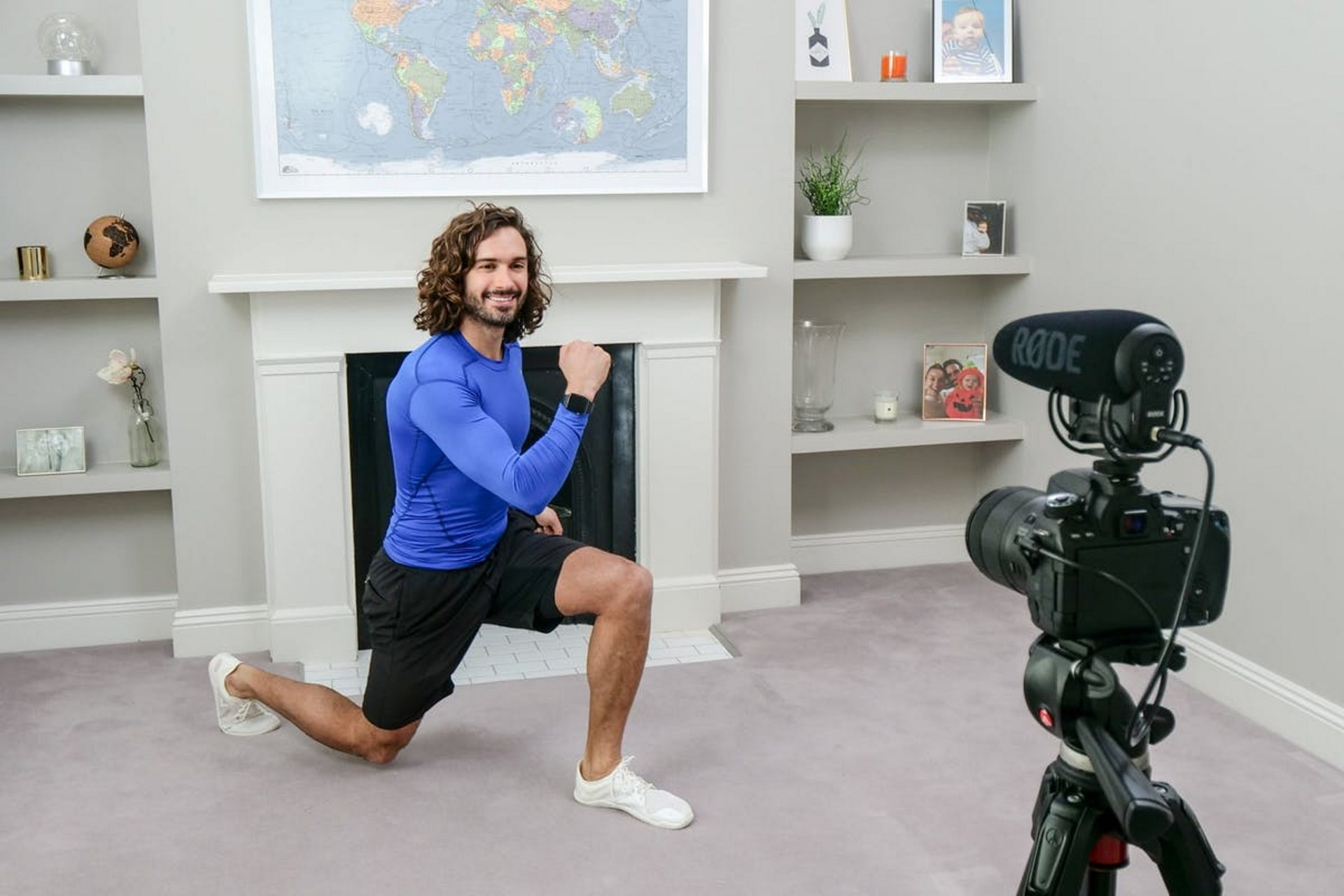Article
Brand Communications Trends 2021: Part One

The events of the last year have led to an unprecedented shift in consumer attitudes and behaviours. Lifestyles have been transformed, as has consumer spending. So, what do brands need to consider as we enter a new year? Diffusion has identified 5 key trends for 2021 that brands can take on board to make sure they are connecting with consumers in the ‘next normal’. Please see part one of our key trends below.
1. Digital experiences
They way in which we live today is drastically different to 12 months ago. From how we work and study to shopping and socialising – COVID-19 has disrupted every facet of our lives. With more people staying at home, brands have been forced to redefine their customer experience meaning digital engagement is now more important than ever before. At the start of lockdown BrewDog launched its online bar to recreate its traditional bar experience and as Joe Wicks became the nation’s saviour we started to see a huge surge in interest from consumers for home fitness, with brands such as FRAME and Barry’s Bootcamp pivoting to produce online classes.
Even travel, one of the most severely impacted sectors has embraced digital to ensure they can continue with Airbnb offering ‘virtual’ experiences led by its hosts such as bartending and cooking classes. A whole generation of children has had to embrace online learning following lockdown restrictions in 2020. A study from Teacherly, a community of teachers using technology to create and deliver lessons remotely, found that school pupils are crying out for more flexibility when it comes to school and learning, with 43% of those who learnt at home would like greater flexibility of learning moving forward.
As consumers increasingly discover and engage with brands online, the 2021 digital experience needs to be carefully considered. There’s no doubt that people have been suffering from digital fatigue these last few months, so brands need to be smart about how they implement a digital strategy to ensure it is relevant and engaging, gaining the attention of the consumer. How long-term this change is, is yet to be seen, but the move from pure IRL experiences to an integrated online-offline hybrid is key. The events of 2020 will have a lasting impact on consumer attitudes, shifting our sense of what “normal” is.
2. Further shift towards D2C retail
D2C was seeing a rise in consumer demand even before Covid-19 hit. 2020 has acted as a catalyst with many brands having been forced to adapt quickly, swapping out traditional retail routes to online D2C channels. Across all industries, shopping habits are changing to match a growing culture of convenience and exceptional customer service, a focus made popular by D2C brands.
Consumers are now taking more care to make educated decisions on what, and from where, they purchase. D2C businesses has quickly become a popular, agile, and cost effective option during the unpredictability of the pandemic. From food box delivery services such as Abel & Cole and Hello Fresh to Freddie’s Flowers and homeware brands such as Made.com, D2C has been transforming every vertical. Many D2C businesses have thrived over the last few months, with it being reported that meal kit delivery service Gusto seeing so much demand that they couldn’t take on any more customers.
Alongside D2C disruptors, major traditional retail brands such as Nike, Nestle (which recently acquired a majority stake in Mindful Chef) and Heinz are also moving into this space as they activate direct relationships with their customers and strive to overcome the uncertainty and lack of supply chain control that the pandemic has caused.
In our latest D2C Consumer Purchase Intent Index we found that in this COVID-driven comfort economy, consumers have been turning to D2C with clothing and wellness brands leading the charge. And, as we turn online to buy our essentials, D2C purchases for food and everyday products are becoming more popular.
Looking ahead to 2021, D2C is going to be instrumental for many brands recovering post-COVID. As many strive to embrace key factors driving purchase intent in modern retail: faster shipping, cheaper costs and customer service excellence, adopting a D2C model will help retain control of the brand experience and ultimately its reputation.
3. Increased emphasis on wellbeing.
Another trend we are seeing, and expect to see continuing into 2021 is wellbeing, both physically and mentally which has come to the fore. After months of headlines about the impact COVID-19 is having on our health, people are now far more aware of their own wellbeing, as well as the wellbeing of those around them.
With wellness now moving up the agenda for many consumers, brands need to consider wellness as an essential component of their strategy.
Aside from the wellness sector itself, brands across other verticals should also think about how they can best support the health and wellbeing of their customers if they are going to connect with them in 2021. Student living specialists, Scape, is one brand that is doing just this. The health and wellbeing of their student community has always been important, and COVID-19 has amplified this. To support university students, Scape launched its Fresher & Healthy service, offering free health checks and advice to those who might be worrying about their wellbeing. And, earlier in the year Uber partnered with Unilever to provide hygiene kits in-car, helping to reassure both their drivers and customers that their wellbeing is front-of-mind.
COVID-19 has meant that many consumers have had a renewed focus on self-care and bettering their wellbeing. Netflix has taken this trend on-board, forming a partnership with Headspace, bringing a meditation series to its customers in 2021.Brands need to ensure they are putting the consumer and their wellbeing first.
4. Purpose over profit
Many think the term “purpose” has been overused but when it comes to businesses needing to recover in a post-Covid world, making sure you have purpose is imperative. Kantar’s COVID-19 Barometer study found that 20% of people aged 18-34 feel that brands should ‘guide the change’ and play an active role in making the world a better place. And, during lockdown this increased to 27%.
Brands need to consider what they stand for and embracing purposed should be a central part of their strategy. Leadership expert Simon Sinek uses the Golden Circle theory to help brands define their purpose by thinking about why they do what they do, as opposed to what they do. By getting to the crux of why you do what you do, brands can define their purpose. From asking the question ‘why’ you exist, a brand can align their ‘how’ (their process) and ultimately their ‘what’ (the proof of what they do) with their brand purpose. This way of communicating, from the inside out, will help brands to inspire engagement and loyalty from not only their consumers, but their employees and other stakeholders too.
Start-ups can more easily integrate purpose into their brand, whereas larger companies with a legacy brand identity need to take time to go through the process and understand their ‘why’ beyond making a profit. With consumers now increasingly conscientious, brand purpose is an important factor when considering a purchase in the ‘next normal’. For brands to really connect with consumers on a personal level and inspire loyalty they need to think about their ‘why’ and then make sure this message is real and authentic, and not just following a trend to make a profit.
5. Speaking up
Sitting on the fence and doing nothing won’t cut it in 2021. Brands that want to appeal to consumers need to have a point of view and take a stand on social issues. We saw from Black Lives Matters and the racial inequality protests around the world that consumers expect brands to speak up and advocate change. What’s more, consumers are wanting brands to walk the talk – simply saying you support something isn’t enough, people want to see exactly what it is you are doing to make a difference and using their voice to contribute to real change.
When ITV broadcast a BLM-themed performance by Diversity it made the decision to stand by the message by taking out full-page ads across all the nationals, showing their continued support in the face of any criticism that it was “too political” for a family entertainment show. And, this autumn, Marcus Rashford spearheaded a campaign to feed vulnerable children over half term as MPs voted not to extend the free school meal provision to cover the school holidays in England. Brands showed their support for the campaign with McDonald’s announcing that it would provide a million free meals for vulnerable children, Morrisons providing lunchboxes and the Co-op pledging to provide free school meal vouchers. Smaller brands too decided to show their support and pledged to take part in the campaign.
Today, consumers expect brands to stand for something and be more socially conscious. So, decide who you are as a brand and what your values are, be transparent and make sure what you do honours those values. Your consumers will respect you for it.





